Diamond Candlesticks
(c) Antique Metalware Society
Small extracts can be used with acknowledgements to 'Oldcopper.org' website.
Helpful comments are very welcome.
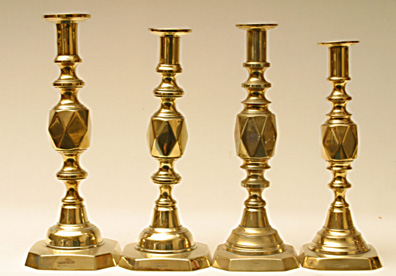
King of Diamonds
Queen of Diamonds
Diamond Prince
Diamond Princess
James Clews and Sons of Manilla Works, 195 Aston Road, Birmingham, furnishing brassfounders were one of the foremost producers of quality candlesticks in the late 19thcentury. To celebrate the Diamond Jubilee of Queen Victoria, they designed a series of candlesticks that were first made in 1897. They were the ‘Ace of Diamonds, ‘King of Diamonds’ and ‘Queen of Diamonds’ and the designs proved so popular that they were still in production until the start of war in 1939. During the late 1940s the remaining warehouse stocks were mostly exported to USA enthusiasts.
The Clews Family webpage.
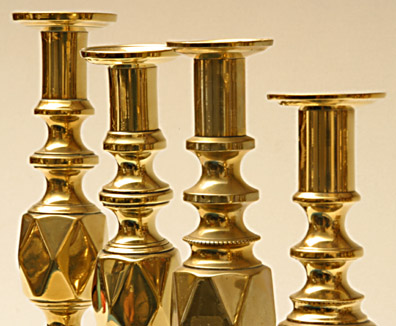
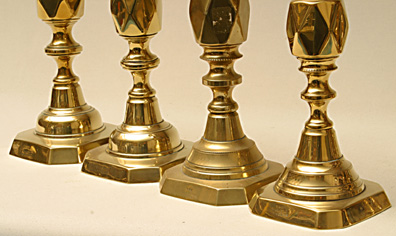
As can be seen in the photos, the range includes differing sizes and designs. The 'Ace' is rare, expensive and not yet added to this collection. All designs have similar square bases with clipped edges and a large centre knop with the namesake diamond decoration. The sconces have well-proportioned flanges and columns. The intermediate knops vary between designs, those for the ‘Prince’ and ‘Princess’ each have one with a serrated edge, though these are sometimes only feint after a lifetime of enthusiastic polishing. Candle ejector pusher rods are fitted to all.


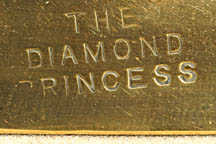
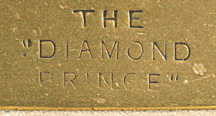
Each candlestick has the name stamped on the base. Presumably this would have been done on final inspection but the stamps are sometimes at an angle that does not show full pride in a top quality product!
The ‘Prince’ design was registered on 18th January 1902 as No. 385856 and the ‘Princess’ as No. 392433. These numbers are stamped on the opposite flanges of the base, sometimes the numbers are confused between the two designs.
The table shows approximate dimensions measured on a small sample. As would be expected with sand castings, the weights vary to some extent.
A few typical measurements:
| Name | Approx Height, mm | Base width, mm | Sconce diameter, mm | Weight per stick, g |
| Ace | 355 | 127 | ||
| King | 315 | 121 | 63 | 860-970 |
| Queen | 292 | 118 | 56 | 744-770 |
| Prince | 300 | 109 | 53 | 846-876 |
FAQ
Would it be possible to tell me if the 'Diamond Princess' candlesticks were reproduced? If they were, how could you tell the difference? Thank you so much for your time.
Yes, I believe that they have been reproduced, probably by several foundries both in the UK and elsewhere.
Some are obviously not the right quality of casting, fettling and finishing.
They may be slightly undersize if the mould has been made from an original candlestick, due to the metal shrinking on solidification.
Inspection of the underside may show a fresh casting surface instead of one with some age – although there may be a similar effect if the candlesticks have just been pickled or stripped of an original chrome plating.
Some are not stamped with the ‘Princess’ and registered design number stamps - although there is no guarantee that all the originals were.
However, remember that the originals were being produced over about 40 years in Birmingham and have variations.
If you think that they look good - enjoy!
After